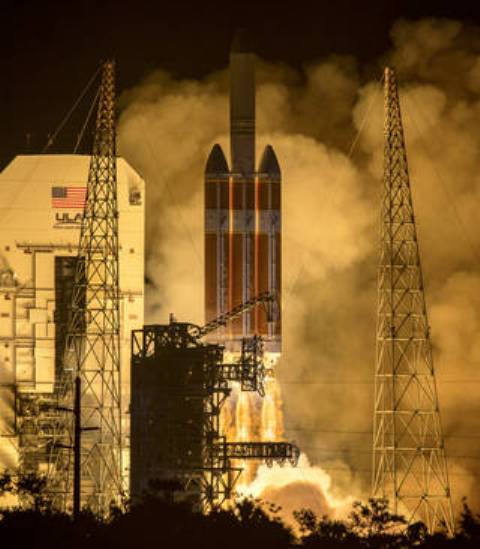NASA's Parker Solar Probe spacecraft operating as designed: NASA
Parker Solar Probe is part of NASA’s Living with a Star program that will directly explore solar processes that are key to understanding and forecasting space weather events that can impact life on Earth.

Parker Solar Probe spacecraft, NASA's first-ever mission to “touch” the Sun, launched back on August 12 is operating as per the mission plans, told mission controllers.
As of 12:00 p.m. EDT on Aug. 16, Parker Solar Probe was 2.9 million miles from Earth, traveling at 39,000 miles per hour, and heading toward its first Venus flyby scheduled for Oct. 3, 2018, at 4:44 a.m. EDT, said a blog post by NASA.
The spacecraft will use Venus to slightly slow itself and adjust its trajectory for an optimal path toward the first perihelion of the Sun on Nov. 5, 2018, at 10:27 p.m. EST (Nov. 6, 2018, at 03:27 UTC), the post added.
Our Parker #SolarProbe spacecraft is on its way to “touch” the Sun, Administrator @JimBridenstine visits our spaceflight facilities and students experiments launch on a sounding rocket - these are a few of the stories happening This Week at NASA! Watch: https://t.co/lrS8ICxOZo pic.twitter.com/8Vxx5olLE0
— NASA (@NASA) August 18, 2018
“Parker Solar Probe is operating as designed, and we are progressing through our commissioning activities,” said Project Manager Andy Driesman of APL. “The team — which is monitoring the spacecraft 24 hours a day, seven days a week — is observing nominal data from the systems as we bring them online and prepare Parker Solar Probe for its upcoming initial Venus gravity assist," he added.
Parker Solar Probe is part of NASA’s Living with a Star program that will directly explore solar processes that are key to understanding and forecasting space weather events that can impact life on Earth. Roughly the size of a small car, the spacecraft lifted off at 3:31 a.m. EDT on a United Launch Alliance Delta IV Heavy rocket from Space Launch Complex-37 at Cape Canaveral Air Force Station. At 5:33 a.m., the mission operations manager reported that the spacecraft was healthy and operating normally.
The mission’s findings will help researchers improve their forecasts of space weather events, which have the potential to damage satellites and harm astronauts on orbit, disrupt radio communications and, at their most severe, overwhelm power grids.
#ParkerSolarProbe is on its way to the Sun, where it will come within 4 million miles of the surface. The region it will fly through, the corona, is actually hundreds of times hotter than the surface. That's one mystery we hope to solve with this mission. https://t.co/oeORHuLCtB pic.twitter.com/F3TpLxUICm
— NASA Sun & Space (@NASASun) August 12, 2018
- READ MORE ON:
- NASA
- mission
- Sun
- Parker Solar Probe
- Spacecraft
ALSO READ
Yechury raises concerns with Election Commission over Income Tax notice to Thrissur CPI(M) committee
Abortions in first 12 weeks should be legal in Germany, commission says
BJP lodges complaint with Election Commission against Congress candidate in Uttarakhand's Garhwal constituency
Health News Roundup: Abortions in first 12 weeks should be fully legalised in Germany, commission says; Novavax investor Shah Capital calls for two independent directors and more
Denmark bets on cow feed additive to reduce methane emissions










